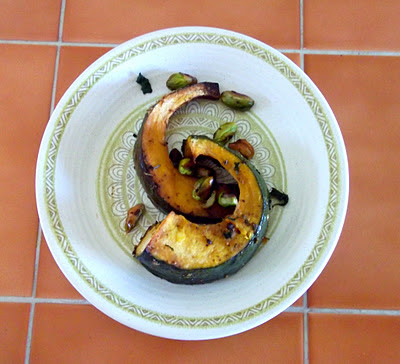A link on facebook to an article on the Guardian website on "The Gay Diet" sent me on a hunt for articles about food, gender, and sexuality. I know there's a ton of critical and book-length work on these issues, but I was curious about what people are saying in shorter, more--ahem--digestible types of work.
"Concerned with looking tough, men opt for macho grub" (Toronto Star, 2010) cites a study that makes the groundbreaking revelation that "men really are concerned with eating manly foods, opting for a cup of Joe over a café latte, spaghetti with big homemade meatballs over a tomato and basil sauce, and salad piled with cold cuts and cheese over something more worthy of being called a salad."
...which prompts half-baked evolutionary interpretations of this phenomenon. Riddih Shah, however, in "Men eat meat, women eat chocolate: How food gets gendered" (Salon.com, 2010) notes that "the U.S. has perhaps one of the more gender-segregated eating cultures in the world. (Can you imagine a French woman saying she stays away from red meat or a French man saying that chocolate is chick food?)."
I've got a lot more to say about this, but I'm curious if any readers want to join in on the conversation. It's no revelation that all kinds of eating practices, food choices and attributes are gendered; it seems like bitterness (manly) and sweetness (girly) are among the most gendered in American culture, but most gendered of all is the extent to which the food resembles human flesh. Crazy? Well, think about meat vs. vegetable, fish vs. steak, even red wine vs. white. (I think wine-vs.-beer, though, derives more from Francophobia and the counter-definition of a hearty, proudly uncultivated, masculine Anglo-American character)
Shah cites scholarship that suggests that people "are more likely to eat a food when they associate with it qualities they’d like to see in themselves," a notion I recently entertained on this blog. More to be said here. But I'm also reminded of Margaret Atwood's The Edible Woman, in which the protagonist identifies more and more strongly with her food and becomes unable to eat any of it. This text portrays a very different understanding of eating. If we identify with our food, is eating violence or incorporation? Does it make us vulnerable to illness, change our bodies, erase our selfhood, or is it an act of dominance and possession? And has anything been written since Carol Adams's slightly embarrassing Sexual Politics of Meat and the more amazingly titled Pornography of Meat?
Also, check out this ridiculous Burger King ad.
So. It's obvious that food is gendered in my culture. Is there really a "gay diet," though? It sounds as though Simon Doonan's Gay Men Don't Get Fat, which prompted the Guardian article, mostly just associates "gay" foods with "girly" foods... A similar elision happens in the hilarious "SOY MAKES YOU GAY" articles I have to reread from time to time.
Perhaps a better question is, are there queer eating practices? I've noted before that an overwhelming portion of vegetarians and vegans are queer (and/or female). Maybe this has as much to do with cultural correlation as it does anything else--as in, if you're already a sort of cultural minority you're more likely to question other cultural dominants? Then again, for every vegan lesbian I know, I know another lesbian who goes out of her way to talk about how much of a carnivore she is.
There are so many different gender/sexuality/culture matrices at work here, and this post is sloppy, impressionistic, and anecdotal. Alas. Happy Friday!
*
And here's what you sick people really come here for.
Sesame Panko Tempeh Cutlets with Tonkatsu Sauce
(testing for Terry Hope Romero's new cookbook)



















